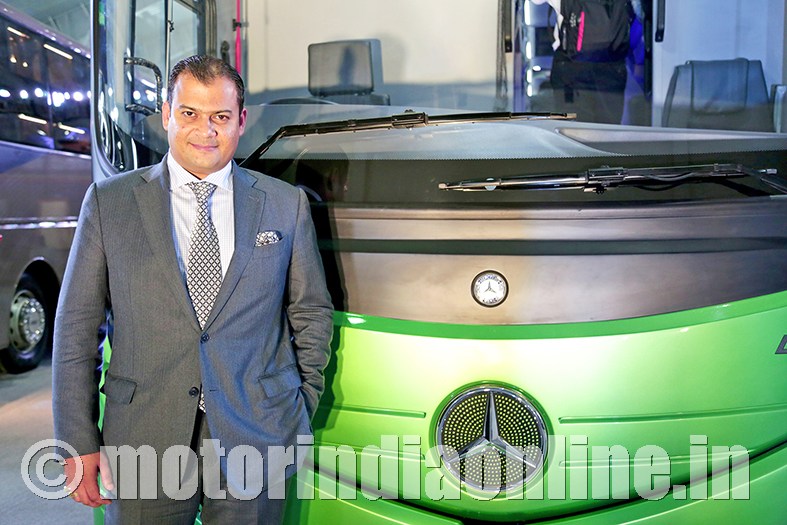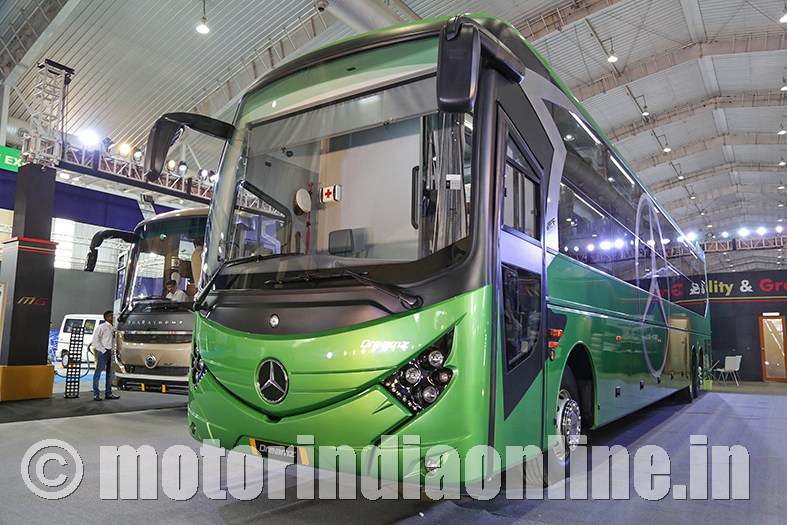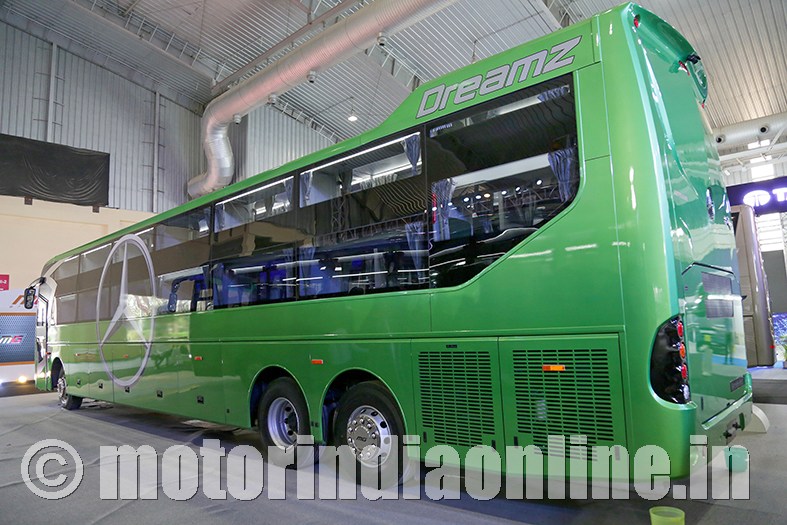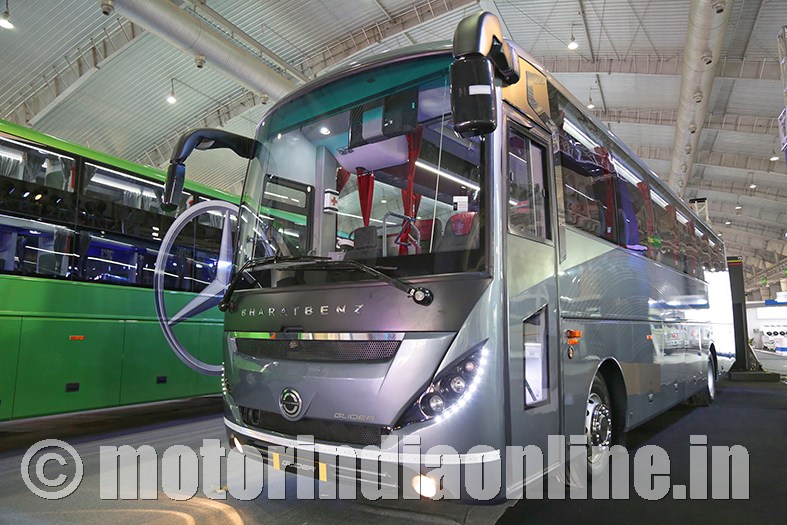Launches three new inter-city coaches – Glider, Glider Z and Dreamz
As in previous editions of the show, the bus body building giant MG Group was the star attraction at this year’s fair, both literally and figuratively. The company’s extravagant stall was strategically placed right at the entrance of the expo hall, while the spectacular display of its eye-candy products stole the entire attention at the show.

This year was the sixth Busworld participation for the MG Group, a vibrant platform that the bus maker seizes to present its new products and testify its prowess without a miss. At the last edition, the company unveiled the ‘Mammoth’ sleeper coach and the ‘Columbus’ tarmac bus, with the latter product elevating the company as an OEM.
This year, the builder streaked firmly across the burgeoning sleeper coach segment with the market debut of ‘Glider Z’ and ‘Dreamz’ models.
Undeniably, the consistency of MG’s participation in almost all privileged bus-related shows in the last couple of years has phenomenally elevated the bus maker’s position as a competent player in the Indian bus industry.
The ‘Glider Z’ coach sits in the mid-premium ‘value’ coach segment, built on BharatBenz 16T bus chassis. A seater iteration of the same coach ‘Glider’ was also unveiled alongside. The ‘Dreamz’, on the other hand, is touted at the premium end of the sleeper bus spectrum, underpinning a multi-axle chassis from Mercedes-Benz.
Commenting on the developments, the Managing Director of MG Group, Mr. Anil Kamat, admitted that the occasion is a significant milestone in the history of MG Group.
“Daimler is a world-renowned ace in the international bus world and an aggressive player in the domestic market. We are honoured working with them and proud to add another feather in our cap. It certainly shows the way we are growing”, he said.
The company sold all the three debut coaches on display during the show, and said that their production has already begun at a dedicated coach building facility at the Belgaum plant.
The ‘Glider’ coaches can be rightly termed as ‘mid-premium’ products, incorporating the growing aspirations of inter-city fleets in the country. Mr. Kamat observed that although the BharatBenz chassis are a bit premium, the Glider is still targeted at the mass-market value segment.
“We expect a lot of traction for the Daimler bus chassis in the coming years, especially the BharatBenz 12-metre variant. A little bit of premium-ness is required for mature markets, considering the changing travel aspirations of long-distance commuters”, he added.
“This is indeed the first time we have commenced the production right after revealing the models, thanks to the overwhelming response from our customers and assistance from the OEM”. The prototyping period for the 14.5-metre ‘Dreamz’ coach was just 22 days, “no wonder in tantalizing and proving the OEM and others on our designing and execution abilities”.
The MG Group also acknowledges that it is still on a learning curve, as a new player embarking on the inter-city coach segments. “The sleeper segment is a board game that involves backbreaking customization and innovation… it’s very cost-sensitive, but a decisive space in the bus market for primetime builders like us”, Mr. Kamat said, while adding that the South Indian region leads in the sleeper coach demand with 25-30 per cent growth year by year.
Asked what could be the next step corollary to achievements of today, Mr. Kamat replied that he is pleased to be working with various OEMs across value to premium segments.
“We will be happy to partner with new bus OEMs and bring new class-leading products, while also enhancing our service delivery to end-users by way of consistent value-addition and improvements”, he said.
The Columbus tarmac coach, a brainchild of MG Group as an OEM itself, is in the final stages of testing and validation and will hit the market by the first quarter of next fiscal, he revealed.
On the policy and regulation front, Mr. Anil Kamat is not quite impressed with the nation-wide implementation of the Bus Code, as many informal body fabricators still find ways and loopholes to by-pass the regulatory aspects and quality parameters. “It’s still a big grey area in bus body manufacturing in the country, a major barrier for organized builders and OEMs to leverage the raising demand for buses”, he observed.
Moreover, he said the maximum GST rate of 28 per cent for buses remains ridiculously high for mass transportation products, especially when there appears a changing awareness among policy makers and commuters on using sustainable mass transportation, at least in cities.
“Higher taxation acts as a major dampener of business in cost-sensitive segments, including inter-city and sleeper coach segments, while also slowing down the sophistication of products in terms of passenger comfort and safety features”, he added.


